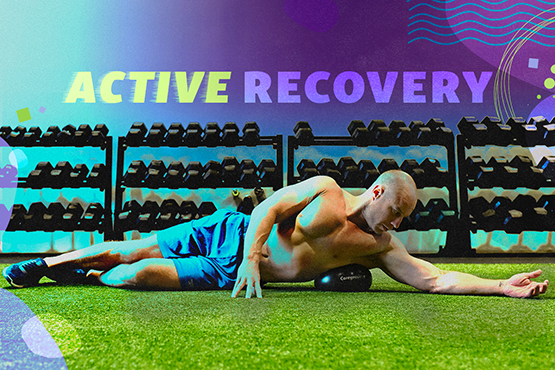
In the world of fitness and physical performance, there has long been an unspoken belief that pushing oneself to the limits is the only way to achieve true strength and progress. Sweating it out at the gym, enduring grueling workouts, and training until exhaustion has been glorified as the epitome of success. Research shows there’s a more balanced approach to improved fitness: Active Recovery.
Burnout is real
Have you ever pushed yourself to the point of exhaustion and experienced burnout?
Burnout colloquially refers to muscle fatigue, the inability of muscles to produce force. Muscle fatigue is often described in terms that refer to a buildup of lactic acid, though this is only a piece of a much larger story involving multiple systems of the body.
The emotional and cognitive state caused by excessive stress is also known as burnout. While the burnout state of complete and utter depletion is not a technical diagnosis, burnout manifests in real medical symptoms such as chronic fatigue, insomnia, brain fog, lack of motivation, and emotional instability. It has also been listed as a syndrome in the World Health Organization’s (WHO) International Disease Classification since 2019.
Burnout not only diminishes quality of life but also sets the stage for serious consequences on overall health. Burnout correlates with increased vulnerability to infectious disease and, if sustained over a prolonged period of time, to chronic conditions including but not limited to heart disease, high blood pressure, and type 2 diabetes (Garg, 2020).
Statistics indicate that it also takes a mental and emotional toll, increasing your risk of depression and addiction (Armon, 2014).
Avoid the Crash and Burn
There is one surefire method to avoid facing burnout – sufficient rest.
Though counterintuitive, layering rest into your routine is a necessary component of building enduring strength and resilience. Research has long shown that a good night’s sleep and taking days off from strenuous activities are critical components of a healthy recovery process (Dupuy, 2018).
We’ve all heard the cautionary tale: intense workouts create micro-tears in the muscles, which, when given time to heal, leads to muscle growth and increased strength. Without adequate recovery, however, these micro-tears can accumulate, resulting in overuse injuries and decreased performance.
Depending on how hard you push yourself at the gym, some workouts require as many as three days of rest before working out again. To ignore this practical recommendation is to risk structural damage to the tissue – and tissue healing estimates increase when you’re waking up exhausted from living in a state of burnout.
While burnout is measured in lactic acid and microtears in the lab, in life the story plays into other aspects of your physiology. To get a fuller picture of muscle fatigue and weakness, it’s wise to look towards the Central Nervous System (CNS), which includes the brain and spinal cord, and the Peripheral Nervous Systems (PNS), the remainder of your nerves.
“There is one surefire method to avoid facing burnout – sufficient rest.”
In addition to lactic acid buildup, muscle fatigue results from sources stemming in the brain (CNS). Studies show that during periods of fatigue, motoneurons exhibit diminished action potential frequency and synchronization. There is also reduced output from the motor cortex region. Muscle weakness, on the other hand, originates in the PNS when there is a shift in the mechanism underlying the transmission of action potentials from nerve to muscle. (Tornero-Aguilero et al, 2022).
On a small scale, these changes are part of life. It’s not uncommon to deplete your energy sources. However, when this happens too frequently or paired with a burnout state, these disturbances can become a chronic condition.
If you live with burnout or want to prevent burnout before it begins, research shows that Active Recovery could be the missing piece in your health and fitness routine.
What is Active Recovery?
Active Recovery is a quick and effective method to minimize fatigue and soreness, improve mindset, and support improved physical and cognitive performance. Rather than pushing the body to its breaking point, Active Recovery focuses on rejuvenation and nourishing the body and mind.
Active Recovery includes a wide range of low-impact activities like walking, self-massage, breathwork and stretching.
This style of gentle, restorative movement further builds and enhances your recovery and resilience, whether incorporated as your main source of exercise or to complement the more intense exercise days as part of your general wellness plan.
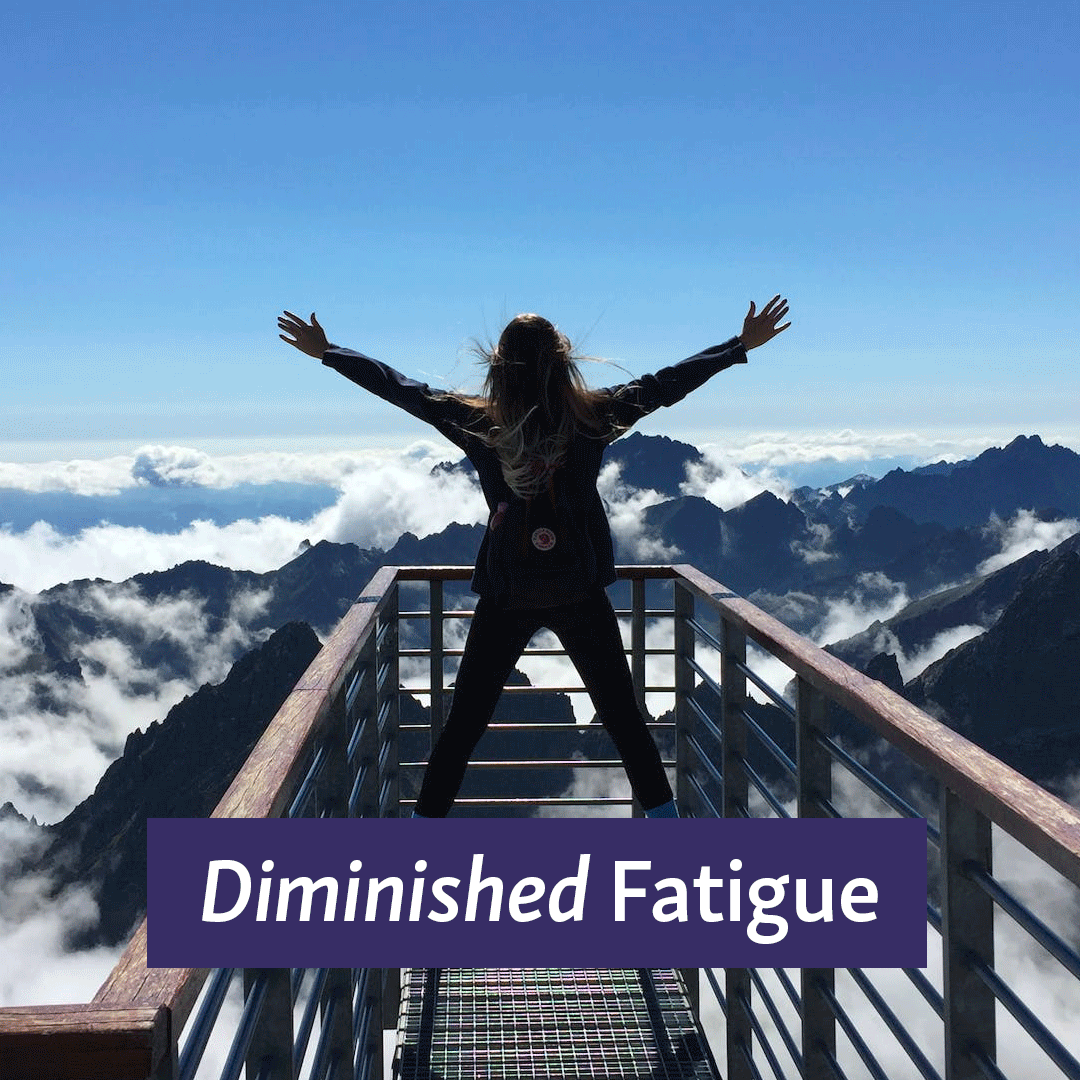
Unlike passive recovery, active recovery improves blood and lymphatic flow, reduces lactic acid and metabolite buildup in the muscles, lowers cortisol, and supports a healthier state of mind.
Active Recovery Fitness Options
Finding the right modality that complements your fitness routine and promotes efficient recovery is key to maximizing your personal overall performance.
Here are some different types of active recovery activities worth considering incorporating into your weekly regimen:
-
Low-impact cardio
Engaging in low-impact cardiovascular exercises, such as swimming or cycling, stimulates blood flow, alleviates soreness, and helps flush out metabolic waste. These exercises are gentle on the joints while still providing a great workout.
-
Stretching, Yoga, and Pilates
Incorporating stretching sessions into your routine can improve flexibility, enhance range of motion, and promote relaxation. These activities not only aid in muscle recovery but also help reduce stress and increase mindfulness.
-
Soft tissue self-massage/rolling
Using self-myofascial release tools such as massage balls or a foam roller can target specific muscle groups and alleviate tension or knots. This technique promotes blood circulation, increases fascial tissue mobility, and enhances muscle recovery. We recommend that these tools be on the softer side to avoid muscle bracing (the opposite of what you’re going for here!)
-
Mobility exercises
Mobility exercises with light bands or weights that target joint range of motion can enhance stability and prevent injury. Incorporate exercises to mobilize specific joints or muscle groups that may need extra attention, such as hips, shoulders or ankles.
-
Walking
Instead of completely taking a day off from physical activity, consider engaging in light activities like walking or a gentle hike. These activities keep your body moving and your blood flowing while allowing your muscles to recover and recharge for more intense workouts.
-
Breath relaxation techniques
Explore various breathing techniques to reduce stress and promote mental well-being and focus. These techniques can aid in overall recovery and help you maintain a positive mindset.
By breaking away from social stigma that valorizes pushing yourself to the limit as the only way, active recovery techniques support building balance in your fitness routine and a reservoir of strength within.
Designing Your Active Recovery Routine
Here are some valuable tips to help you design an effective active recovery plan:
Assess your needs
A self-assessment will help you more fully understand your body’s specific requirements. To tailor your personalized active recovery plan, begin with a check-in to consider any existing injuries or limitations. Pay attention to sensations and discomfort within, notice what needs to be immediately addressed, and act accordingly.
Focus on mobility and flexibility
Dedicate time to stretching exercises, mobility drills, and soft tissue self-massage to improve your range of motion and release restrictions in your muscles. Increased mobility and flexibility can enhance your performance and reduce the risk of injuries.
Keep listening to your body
Pay attention to any signals your body may be sending during movement. If you feel fatigued or experience pain, adjust your active recovery plan accordingly. This ensures that you are providing your body with the rest it needs while still engaging in beneficial activities.
Prioritize sleep and nutrition
Active recovery extends beyond physical activity. Adequate sleep and proper nutrition are crucial for optimal recovery. Ensure you are getting enough sleep and consuming nutrient-rich foods that support muscle repair and growth.
Incorporate relaxation techniques
Explore various relaxation techniques such as meditation, deep breathing exercises, or gentle yoga poses to reduce stress and promote mental well-being. These techniques can aid in overall recovery and help you maintain a positive mindset.
Scheduling time to actively recover
There is no one-size-fits-all answer to how you should practice active recovery. The type and frequency of active recovery sessions will vary depending on your individual needs, fitness level, and the intensity of your regular workouts.
It can be helpful to build a sustainable weekly schedule. Some general considerations you may follow include:
- 1-2 times a week: If you have a relatively moderate exercise routine and aren’t pushing your limits too often, one or two active recovery sessions per week may suffice.
- 3-4 times a week: If you engage in moderate to high-intensity workouts several times a week, consider incorporating active recovery on most non-workout days.
- Daily: If you have a highly intense training schedule or are a professional athlete, daily active recovery, even for short periods, can be beneficial. It may be helpful to schedule active recovery sessions immediately after your more strenuous workouts.
Remember, active recovery is not about pushing yourself to the limit but rather allowing your body to recharge and restore itself. By designing an effective active recovery plan that caters to your specific needs, you can experience all the benefits of restorative practices.
The Active Recovery Mindset
For the many who are taught that the only way to get fitter or better is to push ourselves past our limits, breaking away from the social stigmas around “softer exercise” begins with adopting a mindset of self-compassion.
Active recovery is an act of grace for yourself. Making the choice to engage in mindful movement and restorative practice cultivates resilience, enhances your capacity for adaptability, and develops an expanded skillset to listen to your body and recognize your own needs.
Rather than viewing recovery as a sign of weakness or failure, it’s helpful to adopt an active recovery mindset and embrace the kindness inherent in doing less. Integrating self-compassion into your workouts is a life-changing process that teaches not only is it ok to be kind to yourself, accept your limitations, and seek a balance between stress and ease in your fitness practices – it’s the most beneficial choice for your overall wellness.
Active recovery does enhance inner strength — getting your heart pumping in the range of 30 – 60 percent maximum heart rate supports cardiopulmonary and overall fitness. Studies show that Zone 1 and Zone 2 training builds endurance, improves metabolic health, and increases blood flow. It also supports mental and emotional well-being (Presto, 2023).
Shifting into a self-compassionate active recovery mindset is a crucial component of any well-rounded, balanced training program that takes a strong, first step in the direction of reclaiming your equanimity, joy, and wellness through self-care healthcare.
And remember, active recovery exercises aren’t just for the balance of burnout — you can use them as your main exercise regimen or to supplement any sport or activity.
Works Cited
-
- Dupuy, O., Douzi, W., Theurot, D., Bosquet, L., & Dugue, B. (2018). An evidence-based approach for choosing post-exercise recovery techniques to reduce markers of muscle damage, soreness, fatigue, and inflammation: A systematic review with meta-analysis. Frontiers in Physiology, 9(403). DOI: 10.3389/fphys.2018.00403.
- Garg PK, Claxton JS, Soliman EZ, et al. Associations of anger, vital exhaustion, anti-depressant use, and poor social ties with incident atrial fibrillation: The Atherosclerosis Risk in Communities Study. European Journal of Preventive Cardiology. 2020;0(0).
- Mahaffey, Kinsey. Active Recovery Workouts: What to do on your days off. https://blog.nasm.org/active-recovery. 2023/08/15
- Ortiz, R.O.J., Sinclair Elder, A.J., Elder, C.L., Dawes, J.J. (2018). A systematic review on the effectiveness of active recovery interventions on athletic performance of professional-, collegiate-, and competitive-level adult athletes. The Journal of Strength & Conditioning Research, 00(00), 1-13. DOI: 10.1519/JSC.0000000000002589.
- Ozsu et al. Comparison of the Effect of Passive and Active Recovery, and Self-Myofascial Release Exercises on Lactate Removal and Total Quality of Recovery. Journal of Education and Training Studies. Vol 6, No 9a (2018).
- Presto, Greg. The metabolic benefits of slow, steady Zone 2 exercise. Levels, 09 06 2023.https://www.levelshealth.com/blog/the-metabolic-benefits-of-slow-steady-zone-2-exercise, 9/11/2023.
- Ricci, Mike. Zone 1 and Zone 2, Heart rate training explained. Sep 23, 2016, D3 Multisport. https://www.d3multisport.com/d3-university/zone-1-and-zone-2-heart-rate-training-explained 9/11/2023
- Walsh, Carla. Fast Ways to Lower Cortisol. June 18, 2023, Eating Well. https://www.eatingwell.com/article/8054352/6-fast-ways-to-lower-cortisol-levels/, 9/11/2023.
- Zambon. Veronica. What to know about Active Recovery. Jan 21, 2021, Medical News Today.. https://www.medicalnewstoday.com/articles/active-recovery, 9/11/2023

![New to Self Massage? Start here! Self Myofascial Release Techniques Using Massage Balls [button]](https://www.tuneupfitness.com/wp-content/uploads/2023/07/SelfMyofascial_Blog_Journey_Button.png)

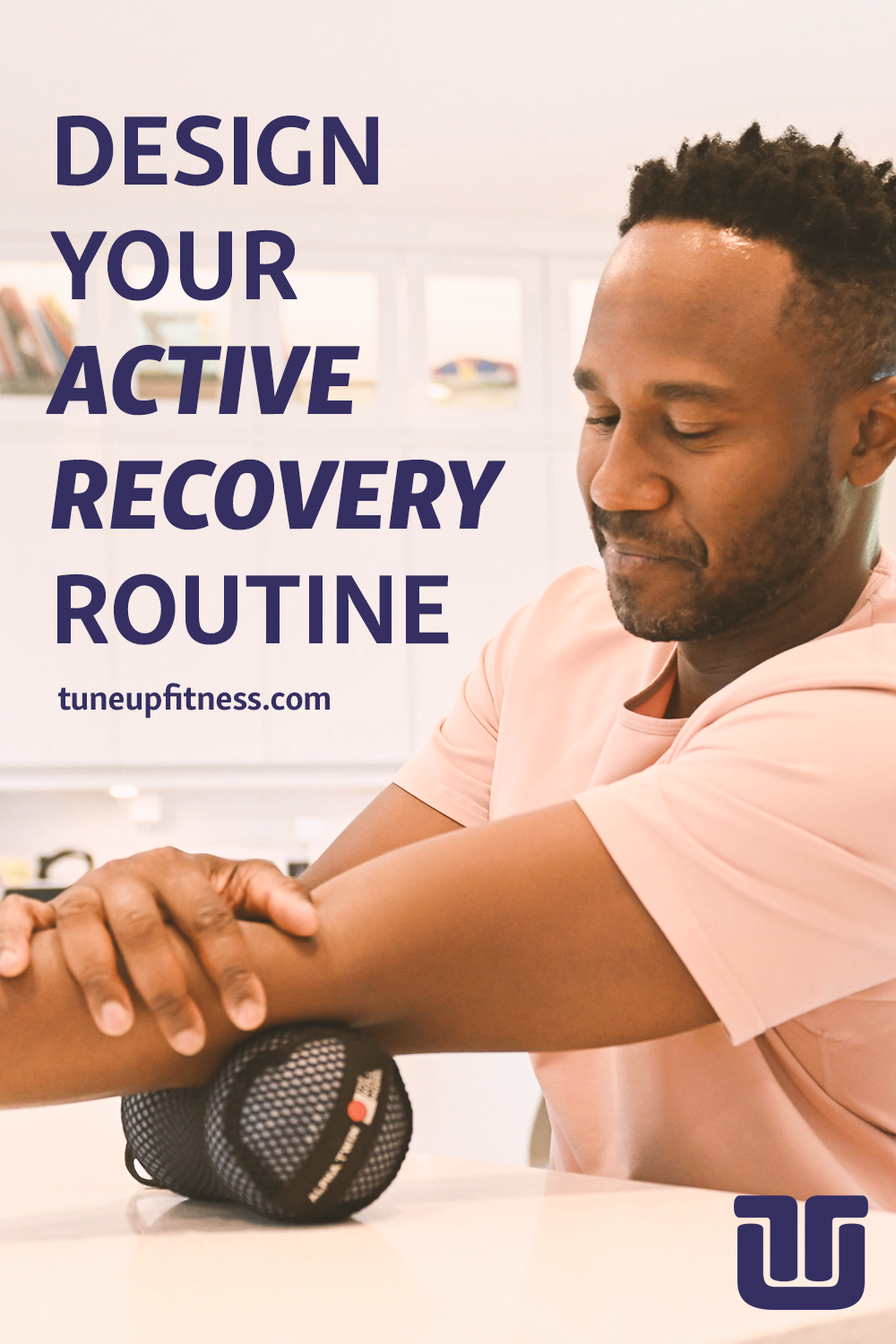



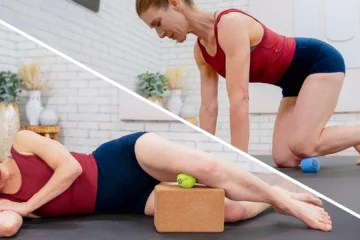
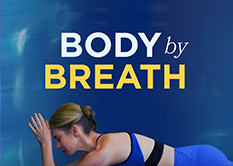



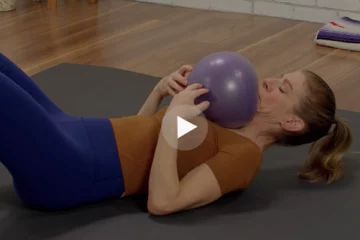
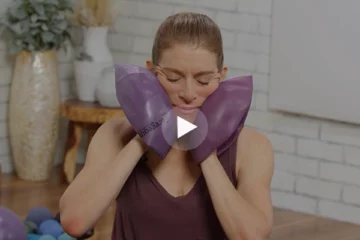


Such a good reminder and wonderful explanation of types of recovery. I love that recovery days don’t have to mean couch days. I was wondering where my tune up days fit in to my workout schedule and this helps me see how it all fits together.
Thank you for the detailed article – I love the addition of the videos, especially the neck relief one.
In the past, even when I was actively recovering from intense activity, I would do it mainly for pain relief or for the fear of pain. Since I have been immersed in the Tune-up Fitness content, I have gradually noticed a change in my mindset and I can finally say that I perform the active recovery with intent and compassion towards myself with clear knowledge that it helps not only my body but also my state of mind. It feels good to finally actively care for myself. During the yoga tune-up teachers training I was introduced to the term Sankalpa, and I was so surprised how incorporating it to any practice, and especially to the active recovery, works so deeply!
Such a great article. I have to admit, that I’ve been a victim of the high performance, no pain no gain mindset a few years back and it took a few cycles of burnout both physically and cognitively/emotionally to finally have that “Aha” moment of incorporating these “slow” days into the routine. When we don’t listen to our bodies, eventually are body will force us to listen to it. I really like the word “active recovery” vs rest day as your not being lazy or unconsciously doing nothing. You are making prigress, you are being mindful and conscious about it! I also love the step by step of how to for the folks that need that extra support. Thanks!!
Thank you for this article. I appreciate the term “active recovery” over “rest day,” which can sometimes suggest that a person is doing nothing or being “lazy.” Society often emphasizes performance and glorifies pushing ourselves to the limit, but this piece, grounded in research, highlights the importance of a balanced approach for sustainable, long-term health.
Our cultural mindset is so oriented toward doing rather than being. Cultivating a practice of active recovery often requires some initial reframing and an extra dose of self-compassion. And yet, it feels so deeply nourishing to tend to ourselves in these ways that it can become very easy to prioritize consistent, meaningful self-care practices over time.
Wow our culture really has us counting our steps, how many hours we work out and do challenges etc. I find that I often do not put myself into my own schedule when it comes to recovery and self care. I am guilty of the crash and burn. This actually has created a need for more recovery time. I embrace the need to slow down and let there be space between all the movement. In addition to your suggestions of self massage, stretching and breathwork~ I constantly have to remind myself of water!!! Drink water, I learned that it is good to do half your weight in ounces daily. For example, if you are 160lbs, drink 80 oz of water daily. I also am learning to hydrate earlier in the day because later can disturb sleep with the need to release the bladder. Castor oil for joint care, helps the joint mobilization as well as break down old scar tissue. I mix my castor oil with half lotion so it is smoother than on its own. I am inspired with this post to design a routine to maximize my time instead of flowing and then pain can set in to make me slow down and take care. I’d rather make a plan today. Thanks for the insight!
Great article! Active recovery is such a game-changer for anyone who works out regularly. As a Yoga teacher who teaches at a rock climbing gym, I spent a lot of my time talking to people I see there almost daily about varying their body movement and taking active rest days to avoid injuries – usually they have to learn the hard way before they’ll listen! I know that I feel best when I move my body everyday, and not only should the activity vary over the course of the week, so should the intensity! I’ll definitely be forwarding this to some of my climbing friends!
This article provides a well-rounded and insightful perspective on the importance of balancing intense workouts with active recovery, and it really resonates with my personal experience. I absolutely love yoga, strength training, and ending my sessions with a relaxing sauna. In yoga, I particularly enjoy the relaxation phase—it’s the perfect balance between the active part of the practice and rest, allowing me to fully unwind and connect with my body. After a strength workout, I always make time for the sauna. It’s the ideal way to relax my muscles and mind, completing my routine with a sense of calm and rejuvenation.
It’s refreshing to see a shift in the narrative away from the “no pain, no gain” mentality, which can often lead to burnout and long-term health issues. The emphasis on active recovery as not just a break, but as a proactive and essential part of a fitness routine, resonates deeply. Incorporating active recovery into a training regimen is indeed a wise approach to building sustainable strength and resilience. This article is a great reminder that true fitness is about listening to your body and finding a balance that promotes overall health.
Thank You for sharing this article. Active recovery, the training component that is most often ‘skipped’ in a training regime even when it’s factored into the routine from my experience. As the author mentions, it’s seen as less important, and tossed aside for the sake of another set, hard mile or time. The recovery component is my favourite part of my workout regime. After a hard workout/rest day activity it is a note of gratitude to my body for enduring the hard work.
Interestingly, the people who live to 100 y/o and beyond are not normally the people who are going to the gym and crushing workouts 6-7 days a week. According to my professor Dr. Dos Santos, most of these people don’t even go to the gym. In my Lifestyles Disease classes, we have been talking a lot about how people can increase their physical activity. Most people living in blue zones are naturally active by just doing everyday normal things. They walk to the grocery store instead of drive. They chop their vegetables by hand rather than buying pre-cut or using a machine. The key aspect here is they are constantly in a state of “active recovery”. And that state has allowed them to keep majority of their abilities long into old age. Love this article because it is such a great reminder that it’s okay to be active every day, as long as the activity complements what are body needs. Our body doesn’t need to be beat up with grueling workouts every day. In fact, 3 good strength training days is all we need, and then we can pair some of the great suggestions from this article into the in-between days so we stay active and allow the body the time it needs to heal and replenish.
I have not considered planning an active recovery plan until reading this blog. Honestly, many of the activities listed I had included as part of an integrated fitness plan. But, this has shifted my mindset tremendously to consider these types of activities in the recovery context and to purposely plan them into your fitness routine. The active recovery ideas are great, very nice way to think of this and helpful!
Yes! I teach exclusively Vinyasa/Restorative blend classes for this exact reason! Even though yoga is already a less intense physical activity, I have found that adding 2-3 restorative poses at the end of a dynamic vinyasa practice makes all the difference in how my students feel leaving the class. One of the places that I teach at is a climbing gym so a lot of my students are very physically conditioned movers who want to get the most out of everything, so I like to say that I “trick” people into laying down with the restorative portion. Active Recovery is so important not just because of the physical benefits, but also to help retire our brain that “doing the most” isn’t always going to yield the best results.
Thank you for giving me the language to consider sharing in encouraging people to partake in AR: “Unlike passive recovery, active recovery improves blood and lymphatic flow, reduces lactic acid and metabolite buildup in the muscles, lowers cortisol, and supports a healthier state of mind.” I also appreciate the list of exercises to help think concretely around what that looks like and considering activity level to help contextualize and schedule how often these exercises should be done. I will bookmark the videos to revisit as I build it into my routine.
Love this!! I currently work in facilitated stretching, and this is something I encourage many of my clients to do. I wasn’t aware of the chronic conditions that could arise (i.e. heart disease, high blood pressure, and type 2 diabetes), so now I have more information and techniques to give them.
This article is such a necessary reminder. I struggle to do less and I know many others who are in the same situation. It’s especially challenging in my life right now to do less but my husband and I have begun incorporating a short yoga nidra almost every day and it has made a world of difference!
As I get older, I’ve noticed that active recovery becomes more and more important. I can still perform high intensity/duration workouts, but I’m finding that I am having to add more active recovery days in between the harder efforts. Self myofascial release, walking, yoga and Pilates are major ingredients in my workout regime now – much more than they were 20 years ago. When we get older we get wiser (hopefully), right? Thank you so much for the reminder… and the validation!
I love this reminder that sometimes less is more and especially appreciated this quote: “By breaking away from social stigma that valorizes pushing yourself to the limit as the only way, active recovery techniques support building balance in your fitness routine and a reservoir of strength within.” However, this left me wondering: is there so little value to passive recovery? Adequate sleep is briefly mentioned, and certainly, these active recovery techniques can support good sleep hygiene, but total rest seems to be underplayed/devalued.
Don’t get me wrong, I love my active recovery, but as someone who has dealt with chronic burnout, I’m curious if there is a point at which active recovery can also feed the aforementioned social stigma to do more; for example, if I am losing sleep each day so that I can add active recovery time into an already busy lifestyle, at a certain point am I doing more harm than good?
Thank you for the reminder! (Active) recovery has always been my weak spot. Even though I incorporate some mobility and soft tissue self massage daily, I still struggle to take full days of rest and active recovery without doing any physical exercise. It’s been a long journey for me and I must say I’m doing much better now than a few years ago. I find that full days of active recovery not only serve as a rest for my body but also for my mind. Active recovery helps me find space in my mind and just let go of all the tension that has built up from daily stress and physical activities.
The majority of my daily exercises are categorized as active recovery, so according to my wearable tech, the majority of my high stress periods occur during the work day, which is full of screen time. After reading this article, I want to incorporate myofascial release and breath relaxation a few times throughout the work day to see if it increases my recovery time by improving blood and lymph flow and lowering my cortisol. Inactivity and a stewing brain seem to need this care as much as overworked muscles.
To build on the nutrition advice, when I wear a CGM, I see that multiple high glucose spikes in a day rob me of recovery time regardless of physical activity, which leads to poor sleep.
I loved each of these exercises!!! Active recovery is counterintuitive to how most of us have trained! I grew up in the “No Pain, No Gain” era and was always praised for pushing through and working hard! I prided myself on my ability to get up super early and do do do all day long and stay up late to get things done (and stay fit by working out all the time). My body spoke up and forced me to relax and take better care of myself with active recovery and to release the “No Pain, No Gain” mentality which NEVER served me! Thanks for these videos!!
I really appreciate that you’ve included Active Recovery Mindset as an important component of preventing burnout. The mindset piece – learning to turn towards, value and be disciplined about recovery not just in theory but in practice has been a very important part of healing and balance for me – and it’s definitely a thing I’m in relationship with vs have mastery with. I “leak” energy more than crash so I really appreciate how many diverse and inclusive ways there are in the YTU system for recovery. And the creative nature of YTU means making changes/modulating for energy each day is collectively valued and has lowered the internalized resistance to doing
“Less” than what I intended and instead centered on doing what is “different” and “right fit” in the present moment. I for sure feel the lowered “firing” at times and it’s easy to view that as low motivation but you’ve highlighted the very important point that those are often messages from our system about needing recovery more than a failure of motivation – of course!
Love this informative and important post. Active recovery with YTU balls is an essential part of my daily workout routine after a hard workout. It helps me sleep better and recover faster. Even if I only have time for 5-10 minutes, I notice a difference my performance the next day.
I’ll recommend these active recovery options to clients and remind them active recovery is a great way to get back into a fitness routine as well for those who aren’t in a regular training program. The strap mobility for the neck video was helpful and informative. Having assistance for rotations was a wonderful experience and I felt the difference afterwards having more mobility in my rotations.
Nice article regarding the all important components of active recovery. I enjoyed the wonderful video demo showing cervical spine assisted range of motion with a strap. This is a Chiropractic staple for home care activities, one that I regularly give my patients suffering from cervical spine facet abnormalities and limited range of motion.
The tricky part about this is that we are living in a society in which we have adapted our bodies to handle high levels of stress and some people, wether subconsciously or not, might enjoy this stress. Therefore, when the body is already sending alarms that is reaching a burnt out, many people ignore these signals until the burnt out finally arrives. Only then, do we take the time to slow down. Our bodies are communicating to us constantly, but we also have a mind that sometimes does not want to listen to the body. I think those active recovery moments can help us lower the bar so we can be kinder and gentler to ourselves and to tune in to what our body needs.
I appreciate your holistic approach to recovery, including sleep and nutrition, along with various physical modalities, some of which surely can appeal to everyone
Thank you for reading! Enjoy your training 🫶
This feels more important as you age as well, perhaps because when you’re young it’s easier to bypass the signals for rest and just keep going. Now, not so much. Really, though, all of these activities enhance enjoyment of life and the experience of being in your body as well. Helps everything.
I read this article because I be heard myself say “I have spent the past few months feeling a mix of overwhelm and burnout the majority of the time”. Although I am not a professional athlete and I don’t train my physical body regularly. However I can relate to most the symptoms of burnout and feel lucky that I do not have heart disease, high blood pressure or diabetes and for me the depression and addiction are manageable. The information about Active Recovery can translate into my lifestyle which can have numerous moving pieces. Using the ideas of the active recovery mindset makes me optimistic that I am capable of managing my life better. Thank you
Thank you for your article Rachel. I work 28 day rotations at sea. My scheduled hours are 12 hrs/day but often turn into 14 to 16 hrs/day & sometimes longer. Exercise often gets neglected during my on cycle and by the end of the cycle my joints are very stiff with limited mobility from sitting at a computer for so many hours each day. I have a habit of binge exercising with yoga classes & other exercises when I get home and not taking time for rest as my type A personality tries to make up for all the exercise I missed while away. It does lead to burnout, injuries & muscle imbalances. I notice it more with age, I used to be able to get away with it but not anymore!
Rachel – Thank you for your article on active recovery. I appreciate that active recovery is another “listening” strategy that allows us to continue training for longevity, rather than pushing so hard that we burnout.
Thank you for this article and for highlighting the dangers of burnout, while offering solutions and strategies for prevention. Sometimes less is more! Recovery is an important component of making sure that workouts are effective and well-absorbed by the whole body system. Active recovery comes in many forms and can nourish the body’s tissues while also providing mental and emotional benefits. There are so many amazing ways to move and maintain vitality and strength.
I very much appreciate your article Rachel because i myself have experienced serious burnout from a very intense and highly stressful lifestyle as a graduate student and scientist. My burnout was at the mental and emotional level, not from a physical place of working out hard or training for marathons. Yet, I felt so depleted that it seemed like I had run marathon after marathon and then an iron man!
Besides changing my lifestyle to save me from a nervous crash and burn, my physical activities now a days are precisely the ones you describe as active recovery. Occasionally, maybe once or twice a week, I will have a more intense workout. I have turned the tables :)) My goal is to rest and recover more!
This is a timely article with all the current focus on training harder vs smarter.
Thanks for this insight, Rachel. It’s interesting how much the brain and nervous system are involved in the process of rebuilding. Very often I talk myself into a run for off days from lifting, but tuning in more compassionately to my body’s messages probably would be helpful. In fact, one of my favorite classes from the library is the Body by Breath: Calm class that you included above. That’s saying something…!
I remember this was a big part of my personal training programs especially when working with eager/new clients who want to progress quickly. Often people burn themselves out with overexercising and stress their bodies and then become demotivated. We learned to tell them that the work in the gym is almost useless without enough rest and active rest to allow the tissues to repair and build new muscle. It’s hard in our culture to justify rest, both in fitness and work, but we’re able to do so much more and build healthier muscle when we do.
Rachel!!! So glad you wrote a whole article in support of active recovery. Working with Type A sport personalities all the time I feel like a broken record talking about how recovery is paramount! Will be sharing this blog in my next newsletter!